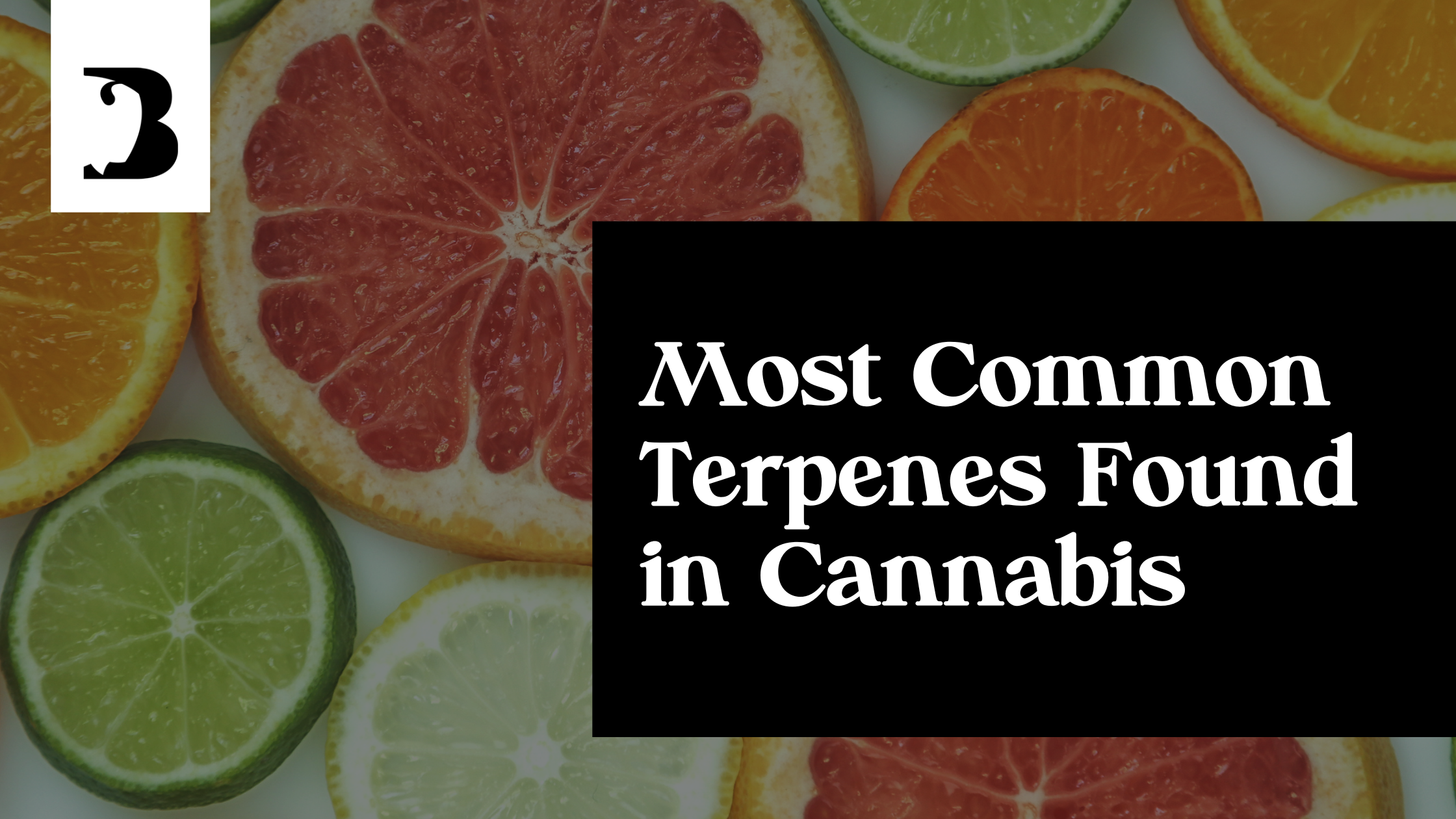Most Common Terpenes Found in Cannabis

Terpenes are chemicals found in plants that produce aroma and play a large part in how cannabis interacts with the body. There are over 200 different terpenes that have been identified in cannabis, but many occur in amounts that are too low to impact the entourage effect of a strain. Some terpenes occur more frequently and in higher concentrations. Three of the most dominant terpenes in cannabis are myrcene, caryophyllene, and limonene. Across the spectrum of cannabis strains these three terpenes are most likely to be produced by the marijuana plant.
MYRCENE:
The most common terpene found in cannabis is myrcene, which is also found in hops and lemongrass. Myrcene is responsible for herbaceous, earthy, musky, and spicy aromas. Most strains’ highest terpene concentration ends up being myrcene, whether the strain is indica or sativa dominant.
Myrcene’s flavor profile can carry a slightly sweet mango taste, a fruit which also contains high amounts of this terpene. Myrcene is thought to have therapeutic effects, chief among them relaxation. Concentrations higher than 0.5% are likely to result in a deeply relaxed state, while strains with less than this amount can be more energetic.
Studies have shown that myrcene can produce anti-inflammatory effects in addition to contributing to the scent and flavor profile. One study showed myrcene prevented the breakdown of cartilage cells, reducing the progression of osteoarthritis. Unfortunately there is little research verified by the government to claim anything works for certain, and cannabis interacts with each individual uniquely.
CARYOPHYLLENE:
Caryophyllene, identified as beta-caryophyllene or β-caryophyllene, gives a spicy, peppery bite to some cannabis strains. Caryophyllene is found within other plants such as rosemary, cloves, black pepper, and oregano, and is responsible for their scents. Similar scents in a strain of cannabis are likely caused by higher concentrations of caryophyllene.
Caryophyllene is thought to have therapeutic uses in fighting anxiety and aiding in relaxation. Caryophyllene is a unique terpene that is also classified as an atypical cannabinoid because of its ability to bind to the CB2 receptors inside the endocannabinoid system.
Research shows that caryophyllene can therapeutically aid in a diverse set of ways. Studies suggest that binding to CB2 receptors helps treat conditions with inflammatory symptoms, and that caryophyllene could potentially ease symptoms of anxiety, depression, Alzheimer’s disease, and more. Without more extensive research into how cannabis can be used medicinally and FDA approval of these studies the potential therapeutic benefits can’t be verified.
LIMONENE:
Limonene’s name hints at the clean, fresh, and citrus scents associated with this terpene. Cannabis, citrus fruits, and ginger all carry high concentrations of limonene. Fruity and flowery scents in strains like Papaya Punch or Black Cherry Soda contain higher amounts of limonene.
Like the other terpenes, limonene is believed to have therapeutic benefits, but none of the claims made by researchers have been verified by the FDA. Limonene is believed to ease stress, uplift mood, and boost focus.
Individual studies have shown limonene increased the production of antibody-producing cells in the spleen and bone marrow. More of these cells benefit the body by protecting from a range of bacteria and viruses, boosting an immune system.
